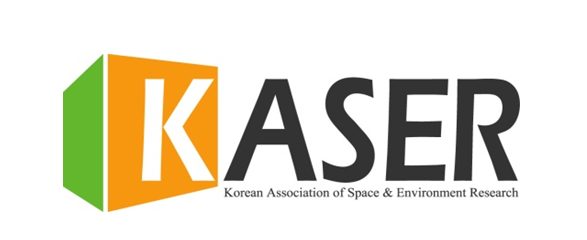ISSN : 1225-6706
논문 상세
- 2024 (34권)
- 2023 (33권)
- 2022 (32권)
- 2021 (31권)
- 2020 (30권)
- 2019 (29권)
- 2018 (28권)
- 2017 (27권)
- 2016 (26권)
- 2015 (25권)
- 2014 (24권)
- 2013 (23권)
- 2012 (22권)
- 2011 (21권)
- 2010 (33호)
- 2009 (31호)
- 2008 (29호)
- 2007 (27호)
- 2006 (26호)
- 2005 (23호)
- 2004 (21호)
- 2003 (19호)
- 2002 (17호)
- 2001 (15호)
- 2000 (13권)
- 1999 (11권)
- 1998 (10권)
- 1997 (8권)
- 1996 (7권)
- 1995 (5권)
- 1994 (4권)
- 1993 (3권)
- 1992 (2권)
- 1991 (1권)
도시재생사업에서 주민의 참여와 배제영주시 삼각지 국토환경디자인 시범사업을 사례로
Residents’ Participation and Exclusion in Urban Regeneration Process: In the case of Samgakji, Youngju City
초록
도시재생에서 주민참여는 2000년대 이후 도시환경 개선을 위한 대안적 방법으로 부각되어왔다. 그러나 주민참여형 도시재생사업이 주민의 일상생활을 위한 공간을 조성하는 만병통치약이 될 수는 없다. 주민참여형 도시재생은 수사학에 그치거나 실제 세계에서는 주민을 배제시키는 영역으로 작동될 수도 있기 때문이다. 본 논문에서는 규범적 의미의 주민참여가 아닌 주민과 정부의 관계 속에서발생하는 실질적인 주민참여와 배제를 고찰하고 그 결과로 만들어지는 실제 공간의 모습이 어떠한가를 살핀다. 특히 영주시 국토환경디자인 시범사업을 사례로유연한 정부와 낮은 역량의 주민 간 관계가 어떻게 주민을 참여시키고 동시에 배제시키는지를 고찰했다. 이를 통해 주민참여형 도시재생이 이루어지기 위해서는주민의 일상적 삶이 반영된 공간 조성에 사업의 목표를 두어야 하며, 참여가 반영된 유연한 제도 운영 및 흔히 알려진 교육 및 지원 프로그램보다는 오히려 주민의 눈높이에 맞춘 일상적인 참여 통로가 필요하다고 제안한다.
- keywords
- 도시재생, 주민참여, 주민배제, 주민 역량, 정부의 유연성, Urban Regeneration, Residents’ Participation, Residents’ Exclusion, Residents’ Capability, Government’s Flexibility
Abstract
Urban regeneration projects with residents’ participation have been highlightedby local authorities since the 2000s, as participatory urban regeneration is consideredas a normative strategy for the improvement of urban environment. Participatoryurban regeneration is not a panacea to improve everyday life space for residents. It is because participatory urban regeneration might be either just rhetoric or toolsto exclude resents in the real world. This paper explains residents’ participationand exclusion generated by government-resident relationship and carefully concludesthat the formation of urban space through urban regeneration may depend on thecondition whether residents and local authorities collaborate or conflict each other. Exploring Youngju city’s urban regeneration project, this paper finds out the combinationboth inclusion and exclusion of residents in the project. As a consequence,this paper suggests tailored invitation to residents’ participation and strategies tominimize residents’ exclusion.
- keywords
- 도시재생, 주민참여, 주민배제, 주민 역량, 정부의 유연성, Urban Regeneration, Residents’ Participation, Residents’ Exclusion, Residents’ Capability, Government’s Flexibility
참고문헌
국토해양부. 2012. 2012년 국토환경디자인 시범사업 공모 지침 .
권은선·김광중. 2011. 「주택재개발에 따른 비자발적 주거이동이 세입자에게 미치는심리적 영향: 서울시 뉴타운지구를 중심으로」. ≪서울도시연구≫, 제12권 2호,41~60쪽.
남영우·성상준. 2009. 「재개발지역의 원주민 세입자 재정착률 제고방안」. ≪한국 디지털 건축·인테리어학회 논문집≫, 제9권 2호, 57~65쪽.
르페브르, 앙리(H. Lefebvre). 2011. 공간의 생산 . 양영란 옮김. 서울: 에코리브르.
박정은·김상조·김재철·정소양. 2012. 기성시가지 재생을 위한 효율적 도시관리제도개선방안 연구 . 안양: 국토연구원.
박주형. 2013. 「도구화되는 공동체: 서울시 마을공동체만들기사업에 대한 비판적 고찰」. ≪공간과 사회≫, 43호, 5~43쪽.
송미령 외. 2005. 「마을개발사업의 성과와 주민참여의 관계 분석」. ≪한국지역개발학회지≫, 제17권 4호, 293~320쪽.
영주시. 2011. 새롭게 열리는 역사의 통로, 주민의견수렴 및 제안을 위한 실태조사 .영주시.
영주시. 2013. ‘주민과 함께 만들어가는 삼각지’를 위한 사회서비스팀 운영 최종보고서 . 영주시.
원제무. 2013. 「대형프로젝트 도시재생사업에 대한 비평적 고찰」. ≪국토계획≫, 제 48권 3호, 5~24쪽.
윤지환. 2011. 「도시공간의 생산과 전유에 관한 연구: 서울 문래예술공단을 사례로」. ≪대한지리학회지≫, 제46권 2호, 233~256쪽.
이영아·변필성·류승한·최병남. 2008. 시민참여형 도시정비를 위한 시민역량강화방안 . 안양: 국토연구원.
조필규. 2010. 「도시정비사업의 효율적 추진을 위한 주민참여 개선방안 연구: 경기뉴타운 시민대학을 중심으로」. ≪한국지역개발학회지≫, 제22권 4호, 63~86쪽.
홍경선. 1990. 「도시재개발과 세입자 운동에 관한 연구: 서울시 사당2동 사례연구」. ≪사회와 역사≫, 26호, 267~360쪽.
힐리, 팻치(P. Healey). 2003. 협력적 계획 . 권원용·서순탁 옮김. 서울: 한울아카데미.
Gidron, B., R. Kramer and L. Salamon. 1992. Governent and the Third Sector: Emerging Relationships in Welfare States. San Francisco, California: Jossey Bass.
Stewart, A. 1995. “Two conceptions of citizenship.” British Journal of Sociology, 46(1), pp. 63~78.
Sullivan, H. 2001 “Modernisation, Democratisation and Community Governance.” Local Government Studies, 27(3), pp. 1~24.
Taylor, M. and J. Lansley. 1992. “Ideology and Welfare in the UK: The Implications for the Voluntary Sector.” Voluntas, 3(2), pp. 153~174.
Taylor, M. 2007. “Community Participation in the Real World: Opportunities and Pitfalls in New Governance Spaces.” Urban Studies, 44(2), pp. 297~317.
Tang, W., J. Lee and M. Ng. 2012. “Public Engagement as a Tool of Hegemony: The Case of Designing the New Central Habourfront in Hong Kong.” Critical Sociology, 38(1), pp. 89~106.
- 57다운로드 수
- 146조회수
- 0KCI 피인용수
- 0WOS 피인용수

